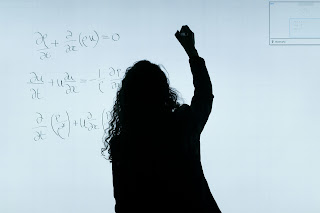Mathematics, at its core, is supposed to make sense. It’s a field built on logic, precision, and rules that leave little room for ambiguity. Yet, every now and then, something comes along that throws a wrench in the works. One such wrench, and a pretty big one at that, is Russell's Paradox. Discovered by British philosopher and logician Bertrand Russell in 1901, this paradox shook the very foundations of set theory—a branch of mathematics that deals with the collection of objects, known as sets.
Russell’s Paradox isn’t just a brain teaser or a quirky little puzzle; it’s a full-blown contradiction that revealed something deeply unsettling about the way mathematicians were thinking about sets. If you’re ready for a head-scratcher, read on.
The Setup: Sets and Naive Set Theory
Before we get into the paradox itself, let’s start with some
basics. A set, in mathematics, is simply a collection of distinct objects.
These objects could be numbers, letters, or even other sets. For example, the
set of all even numbers is a pretty standard set. Set theory is a branch of
mathematical logic that studies these collections and the relationships between
them.
Now, in the early days of set theory, there was this idea
called naive set theory. The concept was simple: any definable
collection of objects is a set. You want a set of all the cats in the world?
Sure, that’s a set. A set of all the numbers divisible by 7? No problem. Naive
set theory didn’t ask many questions—it just happily made sets out of
everything.
The Paradox: A Set That Shouldn’t Exist
This carefree attitude was all well and good until Bertrand
Russell came along and asked a very simple but very tricky question: "What
about the set of all sets that do not contain themselves?" Let’s call this
set R.
- If R
contains itself, then by definition, it shouldn’t contain itself (because
it only contains sets that don’t contain themselves).
- On the
flip side, if R does not contain itself, then it must contain
itself (because it’s supposed to include all sets that don’t contain
themselves).
And there you have it—a logical loop that can drive anyone
mad. This isn’t just a cute wordplay; it’s a real problem. The existence of
such a set would break the basic principles of logic and mathematics. It’s like
asking, “Can a barber who shaves everyone who doesn’t shave themselves shave
himself?” The answer is both yes and no, which, last time we checked, isn’t a
thing.
Why This Matters: The Set Theory Breakdown
Russell’s Paradox wasn’t just an oddity; it showed that
naive set theory had a serious flaw. If we could define a set like R,
the whole structure of set theory would collapse under the weight of its own
contradictions. It was like finding a loose thread that, when pulled, unraveled
an entire sweater.
Mathematicians had to take a long, hard look at the
foundations of their field. It wasn’t just a matter of patching things up; they
needed a whole new approach to avoid this kind of paradox in the future.
The Aftermath: Axiomatic Set Theory and Zermelo-Fraenkel
The discovery of Russell’s Paradox led to the development of
axiomatic set theory. Unlike naive set theory, axiomatic set theory
doesn’t just let any old collection of objects call itself a set. Instead, it’s
based on a system of rules (or axioms) that define what a set is and isn’t
allowed to be.
The most well-known of these is the Zermelo-Fraenkel set
theory (ZF), later extended to Zermelo-Fraenkel with the Axiom of Choice
(ZFC). ZFC includes rules specifically designed to avoid contradictions
like Russell’s Paradox. For example, one of the axioms states that a set cannot
contain itself as a member, which neatly sidesteps the paradox.
Russell’s Paradox serves as a reminder that even in a field
as rigorous as mathematics, things can go off the rails if you’re not careful.
It also shows that the foundations of any logical system need to be carefully
examined and, when necessary, restructured.
Mathematics didn’t crumble because of this paradox; it
adapted. By tightening up the rules and adopting a more cautious approach to
set theory, mathematicians were able to move forward with a stronger, more
robust foundation. And while Russell’s Paradox might never come up in your
daily life, it’s a fascinating example of how something that seems simple—like
defining a set—can lead to some pretty mind-bending problems.
So the next time you think math is all about cold, hard
certainty, just remember: even numbers and sets can have their share of
existential crises.








0 Comments:
Post a Comment